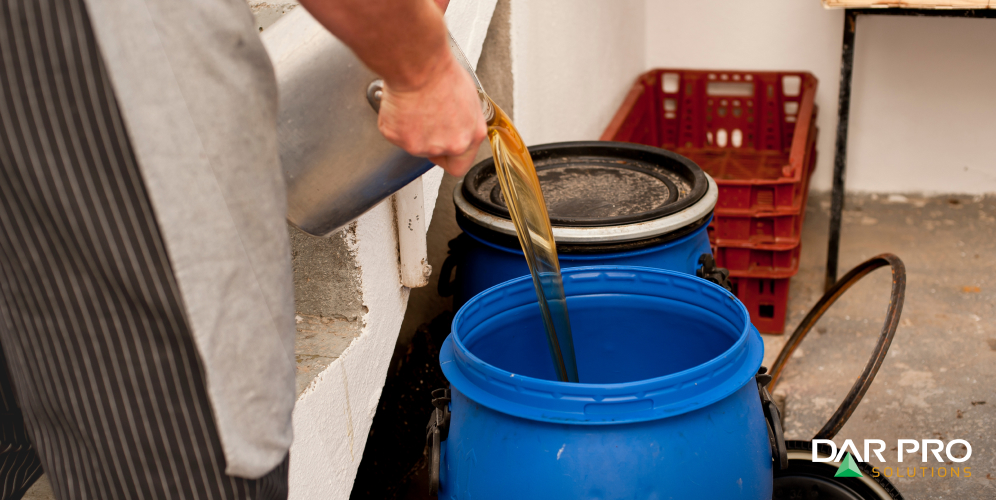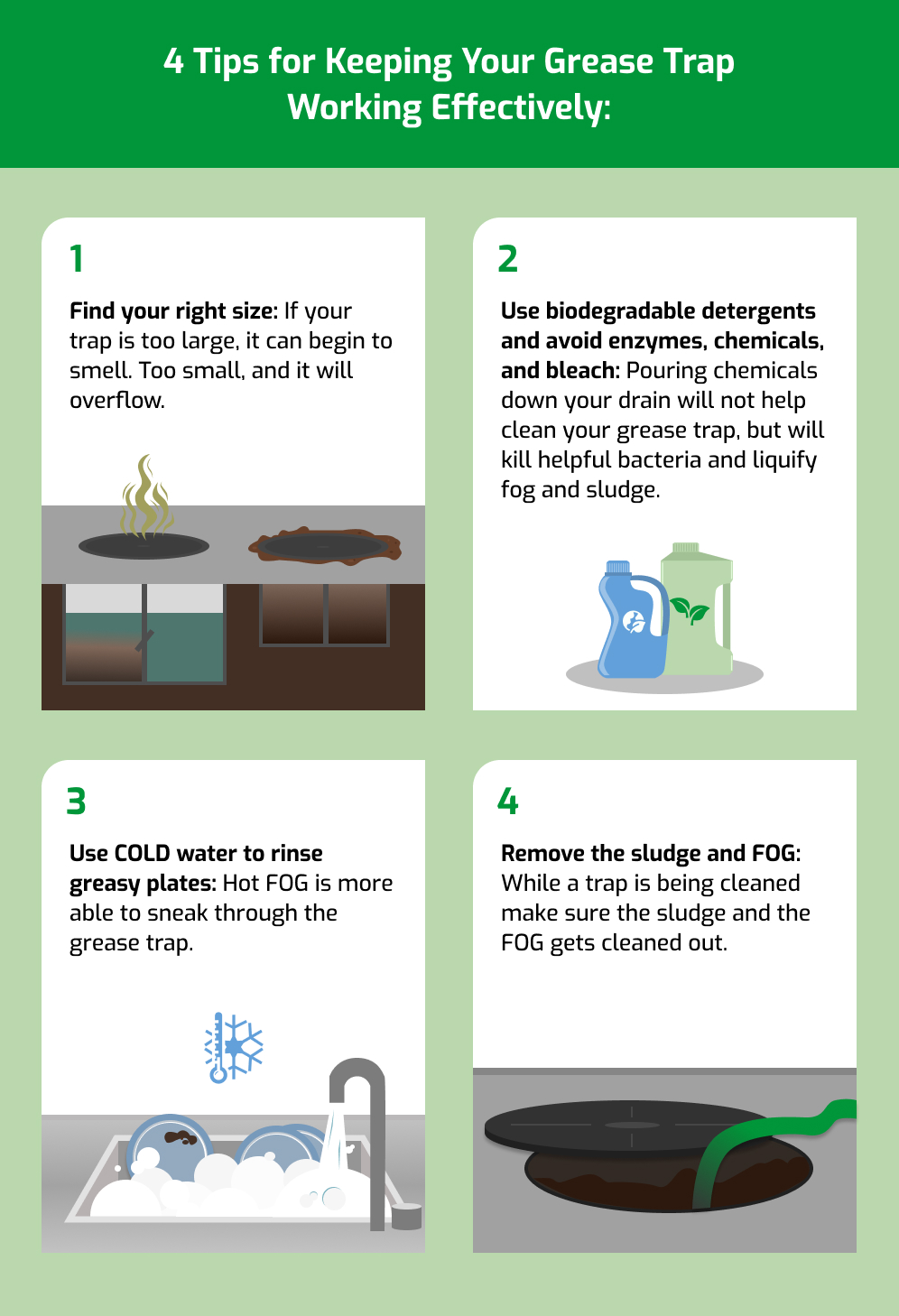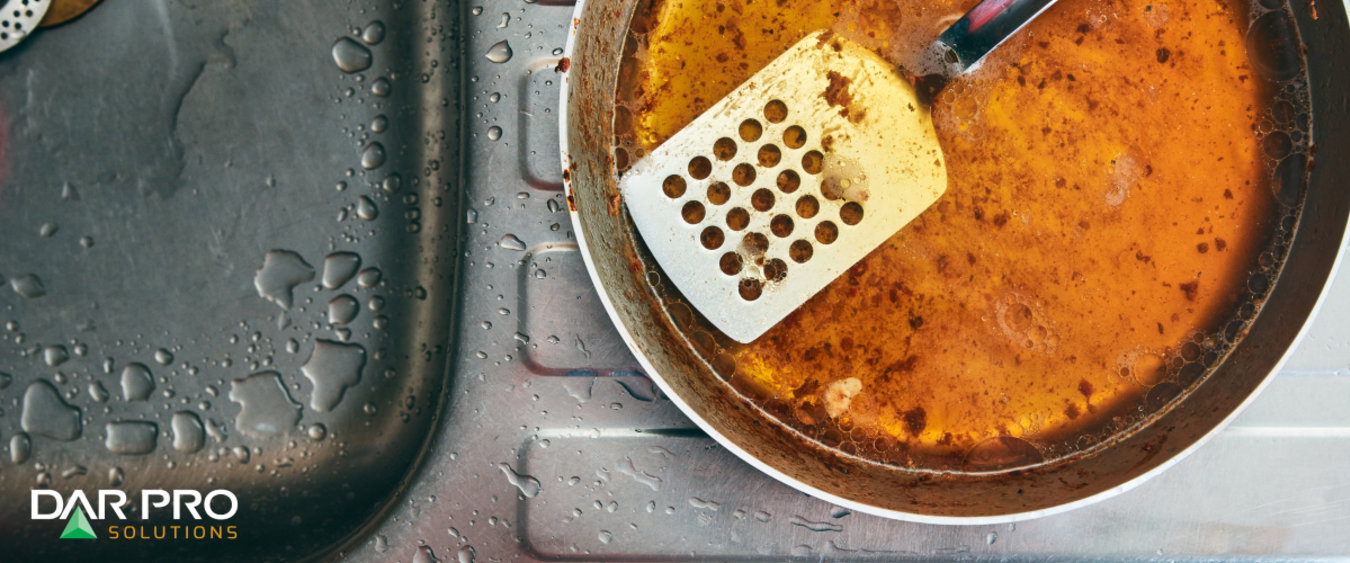Why are they so important, and what could occur if a grease trap isn’t adequately maintained? Let’s discuss the best practices for cleaning and using your grease trap.
What Could Happen if You Don’t Clean Your Grease Trap?
If you’ve spent some time on our website, you’ll know that we care a lot about grease trap maintenance. But why is it so important to get your grease trap cleaned regularly?
Legal Troubles
When a grease trap is in ill repair, it’s more likely for it to leach fat, oils, and grease (FOG) into the public sewage system. Keeping your grease trap clean helps minimize the risk of leakage.
The legal term often used is cradle-to-grave responsibility. When an establishment creates hazardous material, the restaurant must care for and properly dispose of it. Therefore, it’s your legal obligation to make sure your grease trap is not leaking FOG materials.
Grease spills or unlawful release of grease-contaminated water has resulted in fines from a few thousand dollars to as high as $10,000 per DAY until remedied. The hefty fines associated with a malfunctioning grease trap are enough to get regular cleanings.
Loss of Income
Not only are fines expensive, but so are repairs. While under repair, your restaurant might suffer from loss of income. Some repairs will require restaurants to close for a time. Not opening means no customers and no customers means no income.
It’s Not Safe
Having a well-maintained grease trap will help create a safer environment for everyone. When a grease trap is not cleaned, it can often become a safety hazard.
Risks include:
- Slipping
- Tripping
- Falling in
- Drowning
- Hazardous fumes
Leaving FOG in the trap for a long time will only lead to safety issues down the road. It’s best to clean and maintain your grease trap and follow OSHA regulations to keep people safe.
Plumbing Problems For You
Water can have difficulty escaping when a grease trap isn’t maintained correctly.
Lack of maintenance can lead to backups, sinks not draining, standing water in your drains, or gray water flooding your kitchen. Each of these is both expensive and unhealthy.

Plumbing Problems for the City
Allowing FOG to enter your city’s sewer line can contribute to major city-wide issues.
Solidified oil can create blockages and destroy plumbing down the line. In some extreme cases, these buildups are known as fatbergs and can span city blocks.
A Smelly Restaurant
When grease traps are not maintained properly, they can smell rotten. Allowing grease to sit for too long will enable bacteria to spoil it, causing foul odors in your trap.
Remember, bad smells can still come from a recent cleaning. However, this process is normal. Once you run water through the trap, these odors should disappear.
How to Maintain Your Grease Trap
There is a lot you can do to prevent worse-case scenarios. The best way to avoid any issues is to stay on top of cleaning and train employees to be more aware of what goes down the drain.
Be Careful of What Goes Down the Drain
Allowing food particles and FOG down your drain is an easy way to make your grease trap malfunction. Stop letting food go down the drain.
Grease traps are a preventative measure and shouldn’t be your primary source for FOG disposal. Instead, place small amounts of FOG and other food particles into the garbage or a proper holding tank. If you need to dispose of a lot of FOG, make sure you follow the proper procedures
Prevent FOG and solids from entering your pipes by cleaning off plates before they enter the sink.

Clean It Regularly
Regular cleaning is a must if you want your grease trap to work correctly.
On average, you must clean your traps every 1-3 months, but how often will depend on your restaurant’s specifications. You’ll know it’s time to clean your trap when it’s 1/4 full.
Most grease traps require special tools like specialized vacuums and collection trucks. Some smaller traps can be cleaned by just about anyone, but that’s not recommended. Grease trap cleaning is a messy job and if done incorrectly you’ll have bigger problems like a grease spill or a broken trap.
4 Tips to Make Sure Your Grease Trap is Working Effectively
Make sure your grease trap is properly sized for your kitchen; too small, it won’t remove FOG and solids efficiently, but if too large, it can become odorous as materials collect.
Use biodegradable detergents and minimize use of chlorine products. Do not pour enzymes, chemicals or bleach down your drain to ‘clean’ your trap; it can kill off beneficial bacteria in the trap or liquefy the fog and sludge, enabling it to enter the water stream where it will again harden and cause blockages.
Use COLD water to rinse greasy plates or cooking utensils; the grease solidifies and sinks to the bottom of the trap more quickly, clearing the trap’s water outlet drain.
Remove the sludge layer as well as the FOG layer; over time the sludge will decompose and give off pungent odors that infiltrate your kitchen and/or erode the trap itself resulting in costly repair or replacement.

Deal with Your Used Cooking Oil and Grease Trap with One Provider
Partnering with a reputable service provider will ensure your compliance and turn grease traps into a worry-free part of your business. DAR PRO Solutions can keep your business clean and within local regulations.
We specialize in making restaurants more efficient by providing used cooking oil solutions that make collection and disposal easier. For our used cooking oil collection customers, we also offer grease trap cleaning.
Partner with DAR PRO Solutions and get two instrumental services through one provider.
DAR PRO Solutions provides used cooking oil recycling and grease trap maintenance service to restaurants across the country. Our program and used cooking oil storage tanks make kitchens safer and more efficient. Reach out to a DAR PRO representative today and find out how your business can benefit from our program. Call us 24/7/365 at 855-DAR-PRO1 (855-327-7761).
Contact Sales
For customer service inquiries call our toll free number (855) 327-7761
By submitting this form I agree to the privacy policy including the usage of contact details to contact me for marketing purposes.
